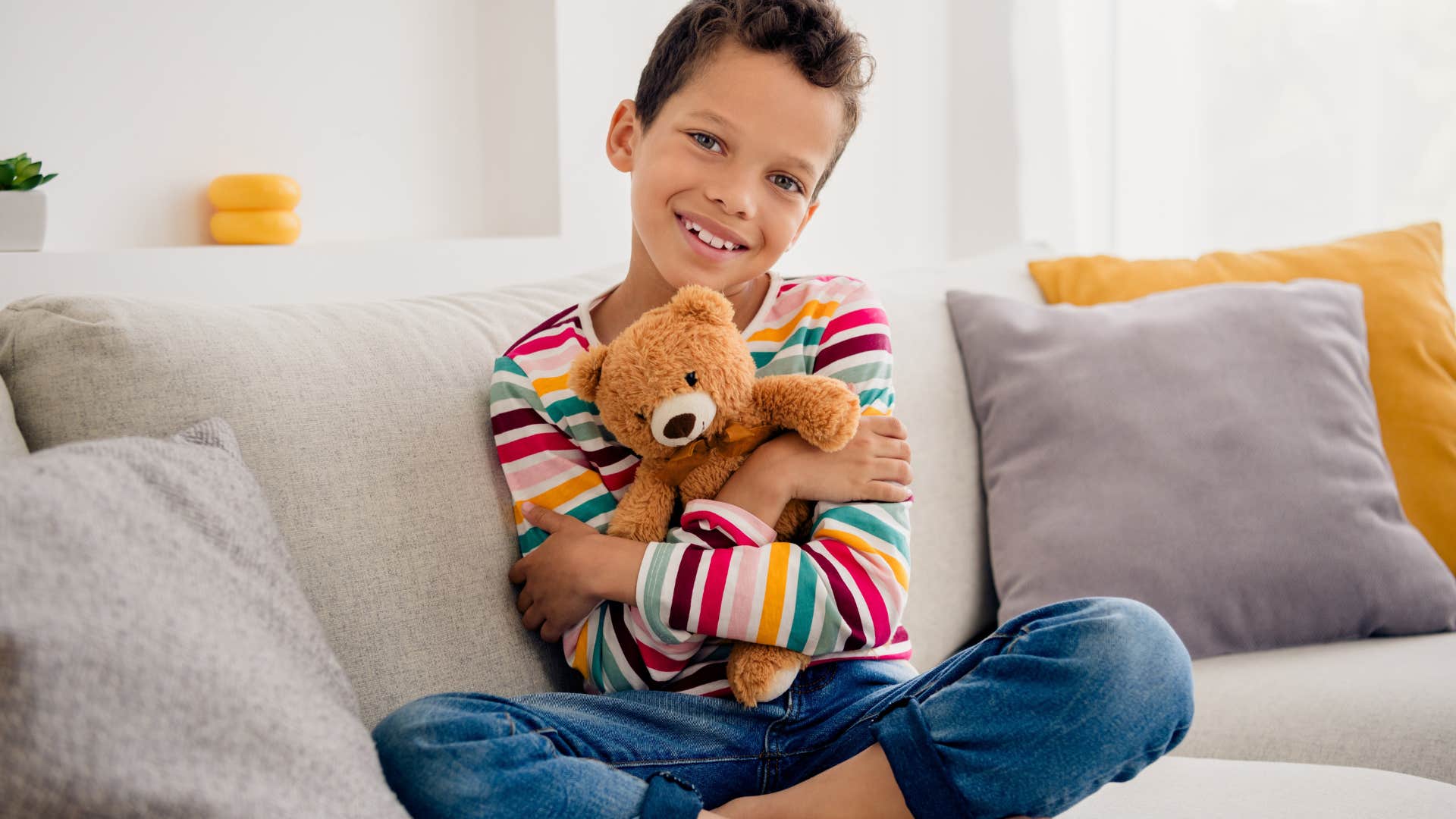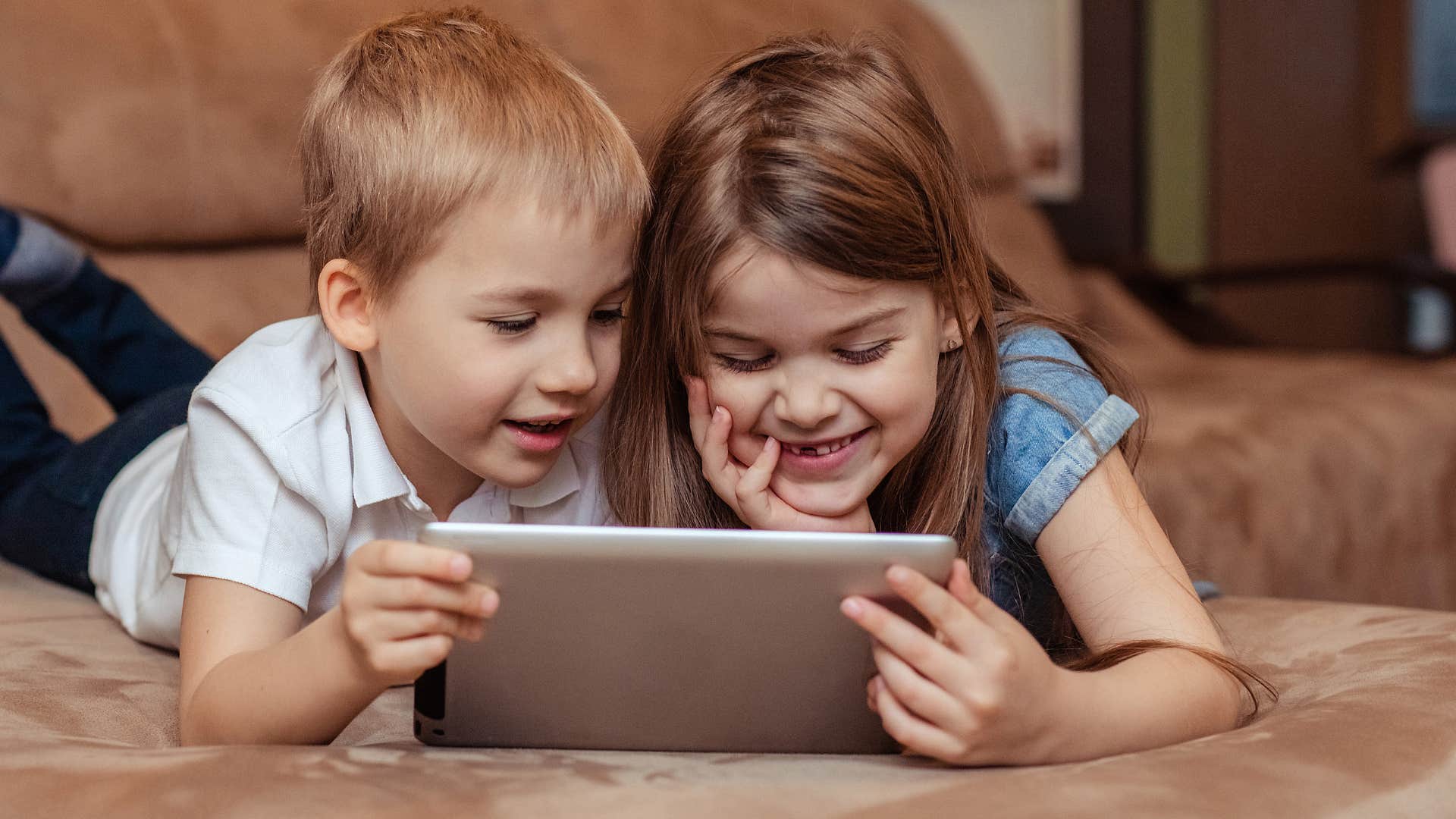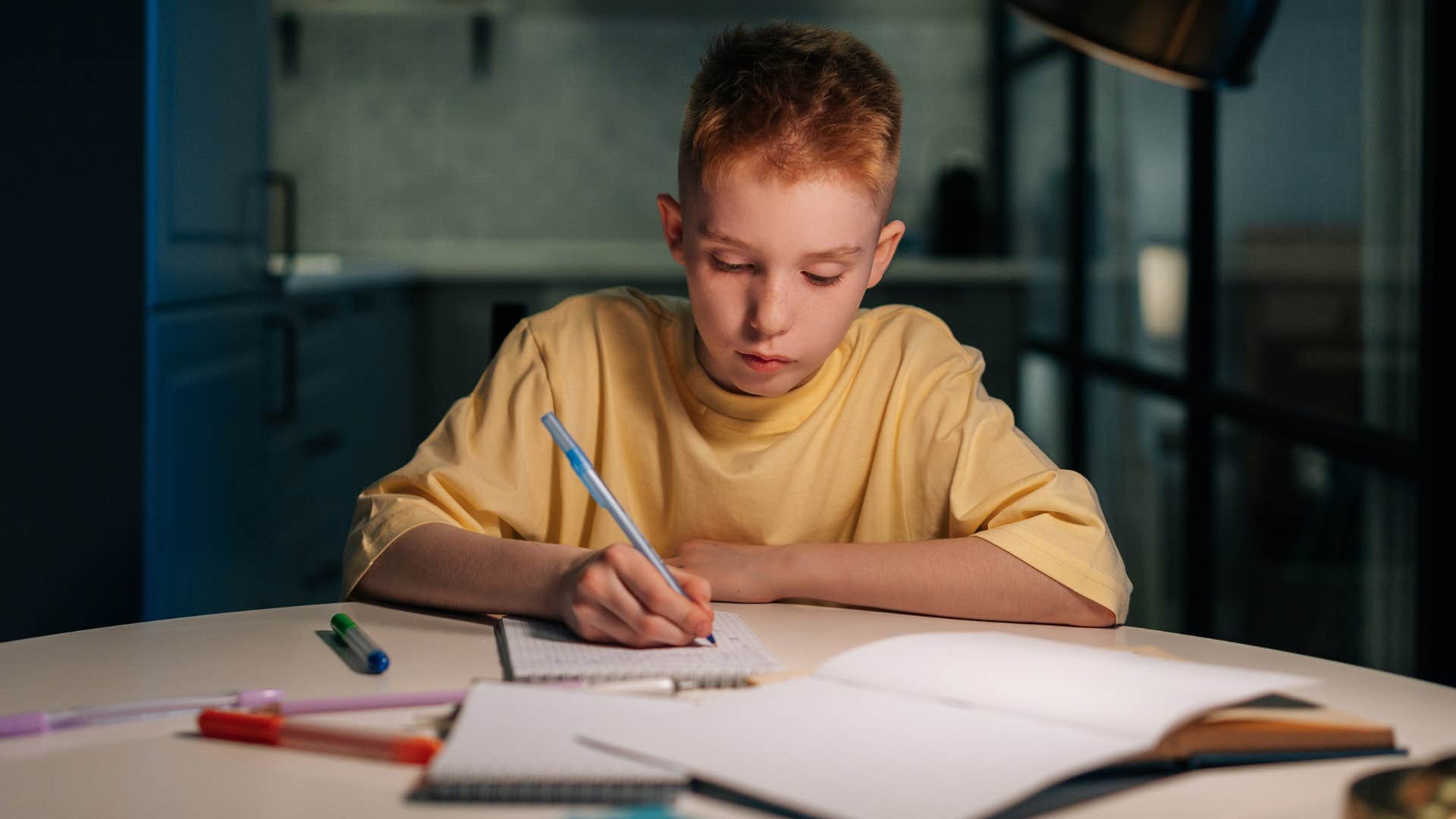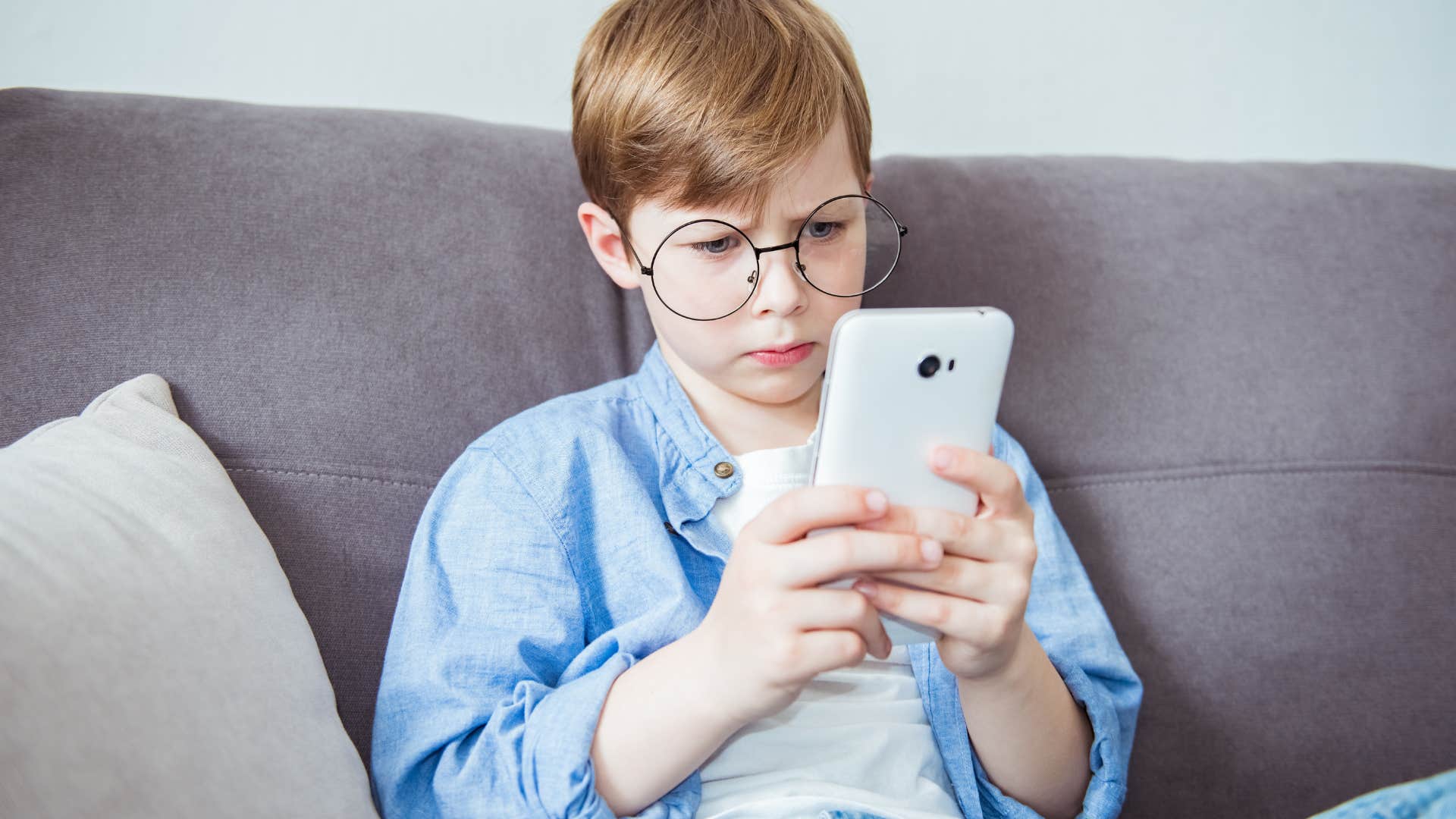10 Ways Being A Kid Has Changed Drastically In The Past 25 Years
The world around us is always evolving, and children often pay the price.
 Oksana Shufrych | Shutterstock.com
Oksana Shufrych | Shutterstock.com Our world is evolving every second, so much so that what's involved in being a kid has changed drastically in the past 25 years. From the news to social expectations to the bonds we cultivate with our neighbors, nothing is ever stagnant. The same is true for children. Their daily lives are always changing, parenting styles are always shifting, and the expectations we hold them to are never the same, sometimes even day by day.
As the State Historical Society of Iowa points out, children’s lives reflect the opportunities and culture in which they live. With discourse about younger generations becoming a major talking point online, it’s impossible to also ignore all of the ways shifting societal discourse and technological advances have dramatically changed what childhood looks like over the past several decades.
Here are 10 ways being a kid has changed drastically in the past 25 years
1. Kids aren't allowed to be unsupervised until much later
 Roman Samborskyi | Shutterstock.com
Roman Samborskyi | Shutterstock.com
According to Jonathan Haidt, the co-author of “The Coddling of The American Mind,” kids are being treated like kids for a much longer period of time than older generations were. From staying home alone to being allowed to venture out of the house alone, older generations admit they were closer to 6-years-old, while Gen Alpha and Gen Z kids were only granted this luxury in their late teens.
Despite lower crime rates today, there’s been a drive in “media mayhem” that’s affected this parenting choice in many households — the fear of danger caused by alarming news stories and movies has kept parents from willingly sending their kids out alone.
Without the freedom to explore, enjoy nature, and get out of the house until later, more kids than ever are developing mental health issues like anxiety disorders much earlier in life than their peers just a few decades ago.
2. Kids are more dependent on technology than ever
 DariaBerestova | Shutterstock.com
DariaBerestova | Shutterstock.com
From direct communication with their parents, to socializing online, and navigating new cities with cellular GPS systems, younger generations of kids today are more reliant on technology to live their lives. A report on teens and tweensfrom Common Sense Media studies reveals that, as of 2021, nearly 42% of kids had a cellphone by the time they’re 10-years-old.
Used as both a blanket of surveillance by parents and a connection with the outside world by kids, technology and social media has become ingrained into the daily lives of children. Nearly half of teenagers even admit they’re on social media “constantly,” according to a Pew Research study from 2022.
3. Kids spend more time on academic work
 Evgeny Atamanenko | Shutterstock.com
Evgeny Atamanenko | Shutterstock.com
According to a study from the University of Michigan, kids today are spending an average of 7.5 more hours a week on homework than children of similar ages were 20 years ago. Along with increased use of technology, social media, and a growth in pressure to acheive academic and extracurricular excellence, many young people don’t get the opportunity to experience free-time in their daily lives.
With their calendars filled to the brim with homework, social connecting online, travel with sports teams, and other extracurriculars, many kids don’t even have the chances to play outside, hang out with friends, or spend time with family that people in older generations cherish from their own childhood memories.
4. Kids don’t play casual recreational sports anymore
 FamVeld | Shutterstock.com
FamVeld | Shutterstock.com
With a rise in sport specialization, financial barriers to joining kids' sports teams, and the tendency for families to put their kids into travel sports from a young age, the lack of accessibility of recreational sports is one of the major ways being a kid has changed drastically in the past 25 years.
Kids (and more specifically, their parents) are being priced out of these casual sports, once intended to promote social connection and exercise for young kids. Now, these teams are used to craft star specialized athletes, who pay the price for expensive gear, traveling tournaments, and exposure.
5. Kids now have greater access to friends and family, no matter where they live
 People Images Yuri A | Shutterstock.com
People Images Yuri A | Shutterstock.com
With a rise in technological access, it’s impossible to ignore the benefits this connectivity has had for young kids looking to make connections and foster healthy relationships. Talking to their grandparents is just one click away. Making plans with a friend or finding support in a time of need is no longer a hassle — just a text message.
Children today can make connections online that are not just comfortable, but well-suited to their interests, needs, and experiences. While in-person “third places,” intended to bolster social connection, have deteriorated for younger generations today, they have access to unique communities online — oftentimes better suited to their identity.
This can not only help kids today to feel less alone, especially if they’ve struggled to make friends or find community in-person, but promote self-expression and confidence their personal identity takes shape.
6. Kids today are held to a more rigid standard of academic success
 Dikushin Dmitry | Shutterstock.com
Dikushin Dmitry | Shutterstock.com
The rise of standardized testing in school districts and curricula across the country has not only contributed to a rise in student mental health concerns, like academic anxiety and burnout, it’s solidified an unrealistic expectation for academic success in many kids today.
According to Lisa Tunnell, M.Ed., this rise in testing has harmed student self-esteem in previously high-achieving students and even affected teacher effectiveness and devotion.
Although debates about the state of education for today's kids are unsettling at the best of times, there have been some benefits to today’s students, who now have access to online learning and more unconventional learning methods.
7. Overall, today's kids are physically healthier
 Yulia Raneva | Shutterstock.com
Yulia Raneva | Shutterstock.com
While a 2021 report from the Nuffield Foundation argues that on average, children are healthier today than they were 25 years ago, there are some setbacks to long-term healthcare access and health inequalities that have appeared in the past 5 years, especially in vulnerable communities across the country.
Uninsured children are more likely to go without care today due to high costs, vaccination rates have declined and stalled, and child obesity rates have risen exponentially.
So, while there is a trend of better health in many children today simply due to medicinal advancements, vaccination access, and specialized healthcare, it’s nearly impossible to compare generational trends given social and financial barriers of our modern world.
8. Kids take part in more organized play than untethered activity
 Gorodenkoff | Shutterstock.com
Gorodenkoff | Shutterstock.com
While kids 25 years ago were more engaged in untethered, independent, and “freewheeling” types of play, modern day children are more focused on screen-time and organized activities.
Many experts suggest that this shift in play today, compared to two decades ago, is not just alarming for cultivating healthy spaces for expression, but for advancing cognitive ability and independence early in life. This isn't only contributing to rising rates of mental health concerns early in life, but removing a level of natural agency and deteriorating chances for the development of important social skills.
9. Kids are more anxious about worldly events and politics than they used to be
 Iren_Geo | Shutterstock.com
Iren_Geo | Shutterstock.com
With technological growth and access to more information, news, and testimonies online, children — rather, tweens and teenagers — are more anxious than older generations were at the same age about political situations, worldly events, climate change, and other newsworthy headlines.
According to Amy Morin, a clinical social worker and the author of an an article in Psychology Today on rising anxiety in modern day children, their heightened awareness with traditional and social media contributes to a sense of helplessness about their future — one that seems to massive and overwhelming to truly contribute to.
10. The parents of today's kids are more stressed and distracted
 juninatt | Shutterstock.com
juninatt | Shutterstock.com
While the reality of many families day-to-day is stressful and distressing, similar to many households two decades ago, the reality of this impact on their children today is far more prevalent. According to an advisory from the U.S. Surgeon General, 48% of parents admit that most of their days are encompassed by overwhelming stress. They’re not just burnt out at work or struggling with rising financial instability, they lack the support and healthy coping mechanisms they need to show up for their own wellbeing — much less that of their own kids.
For kids raised in these stressful households, like Gen Z adults entering the workforce for the first time, their parents' heightened anxiety and unsettling experiences providing for their family has already shifted their workplace dynamic.
As more young generations of kids and teenagers grow into adulthood, it’s likely this pattern will continue — causing a shift in our workplace expectations, culture, and societal responses to overwhelming financial stress and concern.
Zayda Slabbekoorn is a News & Entertainment Writer at YourTango who focuses on health & wellness, social policy, and human interest stories

